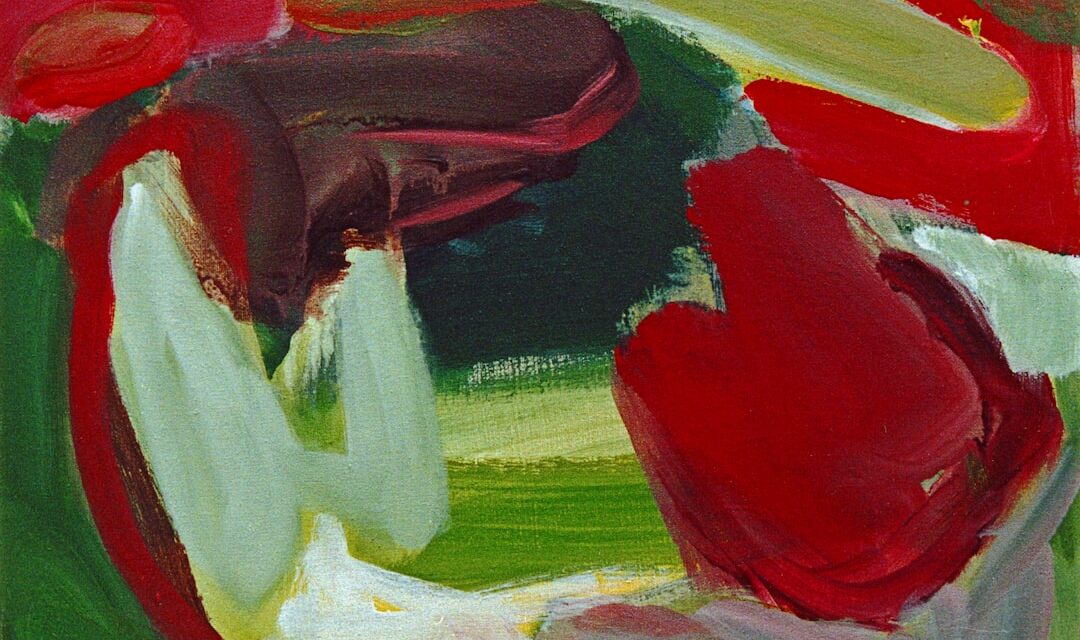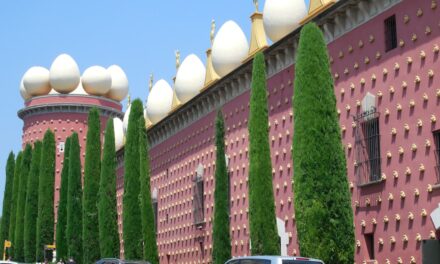Contemporary art refers to artistic works created in the present day. It is a diverse and dynamic form of expression that reflects current cultural, social and political contexts. Contemporary art encompasses a wide range of media, including painting, sculpture, photography, installation, performance and digital art.
Unlike traditional art forms, contemporary art often challenges conventional boundaries and explores novel ideas, concepts and techniques. It is characterised by its experimental nature and ability to provoke thought and stimulate dialogue. Contemporary art is not confined to a specific style or movement, but rather serves as a reflection of our ever-changing world.
Contemporary art is often viewed as a manifestation of the artist’s personal experiences and perspectives, as well as a commentary on the surrounding environment. It is a form of expression that can be deeply personal and subjective, yet also possesses the power to resonate with a broader audience. Contemporary artists frequently utilise their work to address significant social issues, challenge established norms and expand the boundaries of what is considered art.
This form of artistic expression is continually evolving and adapting to the changing world, making it an engaging and dynamic field to explore and experience.
Summary
- Contemporary art refers to the art being created and produced in the present day, reflecting the current cultural, social, and political context.
- The evolution of contemporary art has been marked by a shift towards more diverse and inclusive artistic expressions, breaking away from traditional forms and styles.
- Key characteristics of contemporary art include experimentation, innovation, and a focus on challenging societal norms and conventions.
- Influential contemporary artists such as Banksy, Yayoi Kusama, and Ai Weiwei have made significant contributions to the art world and have sparked important conversations through their work.
- The impact of contemporary art on society is profound, as it serves as a reflection of our times, provoking thought, inspiring change, and shaping cultural discourse.
The Evolution of Contemporary Art
The Rise of New Movements
As the 20th century progressed, contemporary art continued to evolve and diversify, with new movements and styles emerging around the world. Pop art, minimalism, conceptual art, and performance art are just a few examples of the diverse range of artistic movements that have shaped contemporary art over the years. These movements challenged traditional notions of art and expanded the possibilities of what could be considered artistic expression.
Globalisation and Digital Technology
In recent years, contemporary art has become increasingly globalised, with artists from different cultural backgrounds and regions contributing to its rich tapestry. The rise of digital technology has also had a profound impact on contemporary art, opening up new avenues for artistic expression and reaching wider audiences.
A Dynamic and Ever-Changing Field
The evolution of contemporary art continues to be shaped by the ever-changing world we live in, making it an exciting and dynamic field to explore.
Key Characteristics of Contemporary Art

Contemporary art is characterized by several key features that set it apart from traditional art forms. One of the defining characteristics of contemporary art is its emphasis on experimentation and innovation. Artists working in this field are constantly pushing the boundaries of what is considered art, exploring new techniques, materials, and concepts to create work that is fresh and original.
Another key characteristic of contemporary art is its focus on addressing important social and political issues. Many contemporary artists use their work as a platform to raise awareness about issues such as inequality, environmental degradation, and human rights abuses. This form of art has the power to provoke thought and inspire change, making it an important tool for social commentary and activism.
Contemporary art is also known for its diversity and inclusivity. Artists working in this field come from a wide range of cultural backgrounds and perspectives, leading to a rich tapestry of artistic expression. This diversity is reflected in the wide range of mediums and styles used in contemporary art, from traditional painting and sculpture to digital art and performance.
Influential Contemporary Artists
There are countless influential contemporary artists who have made a significant impact on the art world with their innovative work. One such artist is Ai Weiwei, a Chinese artist and activist known for his thought-provoking installations and social commentary. Weiwei’s work often addresses issues such as human rights, freedom of expression, and political corruption, making him a powerful voice for change in the contemporary art world.
Another influential contemporary artist is Yayoi Kusama, a Japanese artist known for her immersive installations and vibrant polka dot patterns. Kusama’s work explores themes of infinity, self-obliteration, and the human experience, earning her international acclaim and recognition as one of the most important contemporary artists of our time. British artist Damien Hirst is also considered a highly influential figure in contemporary art.
Hirst is known for his controversial yet thought-provoking works that challenge traditional notions of art and mortality. His use of unconventional materials and provocative subject matter has earned him a reputation as one of the most daring and innovative artists working today. These are just a few examples of the many influential contemporary artists who have left a lasting impact on the art world with their groundbreaking work.
Their contributions have helped shape the landscape of contemporary art and continue to inspire new generations of artists.
The Impact of Contemporary Art on Society
Contemporary art has had a profound impact on society, influencing culture, politics, and social change in numerous ways. One of the most significant impacts of contemporary art is its ability to raise awareness about important social issues. Many contemporary artists use their work as a platform to address issues such as racism, gender inequality, environmental degradation, and political corruption, sparking important conversations and inspiring change.
Contemporary art also has the power to challenge established norms and provoke thought. By pushing the boundaries of what is considered art, contemporary artists encourage viewers to question their preconceived notions and expand their understanding of artistic expression. This form of art has the potential to inspire creativity, critical thinking, and empathy in those who engage with it.
Furthermore, contemporary art plays a crucial role in shaping cultural identity and fostering inclusivity. Artists from diverse backgrounds use their work to celebrate their heritage, challenge stereotypes, and promote understanding across different communities. This diversity is reflected in the wide range of artistic styles and mediums used in contemporary art, creating a rich tapestry of cultural expression.
Contemporary Art Movements

Street Art: A Form of Urban Expression
One such movement is street art, which has gained popularity as a form of urban expression that challenges traditional notions of art and reaches wider audiences. Street artists use public spaces as their canvas to address important social issues and engage with local communities.
Environmental Art: Raising Awareness
Another influential contemporary art movement is environmental art, which focuses on raising awareness about environmental issues through site-specific installations and interventions. Environmental artists often use natural materials and landscapes as a means of addressing topics such as climate change, deforestation, and pollution.
Performance Art: Blurring Boundaries
Performance art is another important contemporary art movement that blurs the boundaries between visual art and live performance. Performance artists use their bodies as a means of artistic expression to address themes such as identity, gender, and social justice. This form of art challenges traditional notions of artistic practice and engages viewers in a unique and immersive way.
These are just a few examples of the many contemporary art movements that have emerged in response to the complex and diverse world we live in. Each movement reflects the unique perspectives and experiences of artists working in this dynamic field.
The Future of Contemporary Art
The future of contemporary art is an exciting and dynamic landscape that continues to evolve in response to the changing world we live in. As technology continues to advance, contemporary artists are exploring new ways to integrate digital media into their work, creating immersive experiences that engage with audiences in innovative ways. Furthermore, the globalized nature of contemporary art means that artists from diverse cultural backgrounds are contributing to its rich tapestry, leading to a more inclusive and diverse artistic landscape.
This diversity is reflected in the wide range of mediums and styles used in contemporary art, from traditional painting and sculpture to digital art and performance. The future of contemporary art also holds great potential for addressing important social issues and inspiring change. Many contemporary artists are using their work as a platform to raise awareness about issues such as inequality, environmental degradation, and human rights abuses, sparking important conversations and inspiring action.
In conclusion, contemporary art is a diverse and dynamic form of artistic expression that reflects the ever-changing world we live in. Its emphasis on experimentation, innovation, social commentary, and inclusivity makes it an important tool for inspiring change and shaping cultural identity. As we look towards the future, contemporary art continues to evolve in response to new challenges and opportunities, making it an exciting field to explore and experience.
If you are interested in learning more about the evolution of art, you may want to check out an article on Thinkofart.com that delves into the fascinating world of Cubism. This artistic movement, which originated in the early 20th century, is known for its abstract and fragmented representations of subjects. To read more about this influential art movement, visit Thinkofart.com.
FAQs
What is contemporary art?
Contemporary art refers to the art being created and produced by artists living today. It encompasses a wide range of styles, techniques, and mediums, and often reflects the current social, political, and cultural issues.
What are some common themes in contemporary art?
Common themes in contemporary art include identity, globalization, technology, and environmental concerns. Artists often explore these themes through various mediums such as painting, sculpture, installation, and performance art.
How is contemporary art different from modern art?
While modern art refers to the art produced between the 1860s and the 1970s, contemporary art refers to the art being created and produced today. Contemporary art is often more diverse and reflects the current cultural and social context.
What are some famous contemporary artists?
Some famous contemporary artists include Banksy, Yayoi Kusama, Ai Weiwei, Damien Hirst, and Cindy Sherman. These artists have made significant contributions to the contemporary art world and have gained international recognition for their work.
Where can contemporary art be found?
Contemporary art can be found in art galleries, museums, public spaces, and online platforms. Many cities have dedicated contemporary art galleries and museums that showcase the work of contemporary artists. Additionally, art fairs and exhibitions often feature contemporary art from around the world.
How can I learn more about contemporary art?
To learn more about contemporary art, you can visit art galleries and museums, attend art fairs and exhibitions, and read books and articles on contemporary art. Many educational institutions also offer courses and workshops on contemporary art for those interested in delving deeper into the subject.




